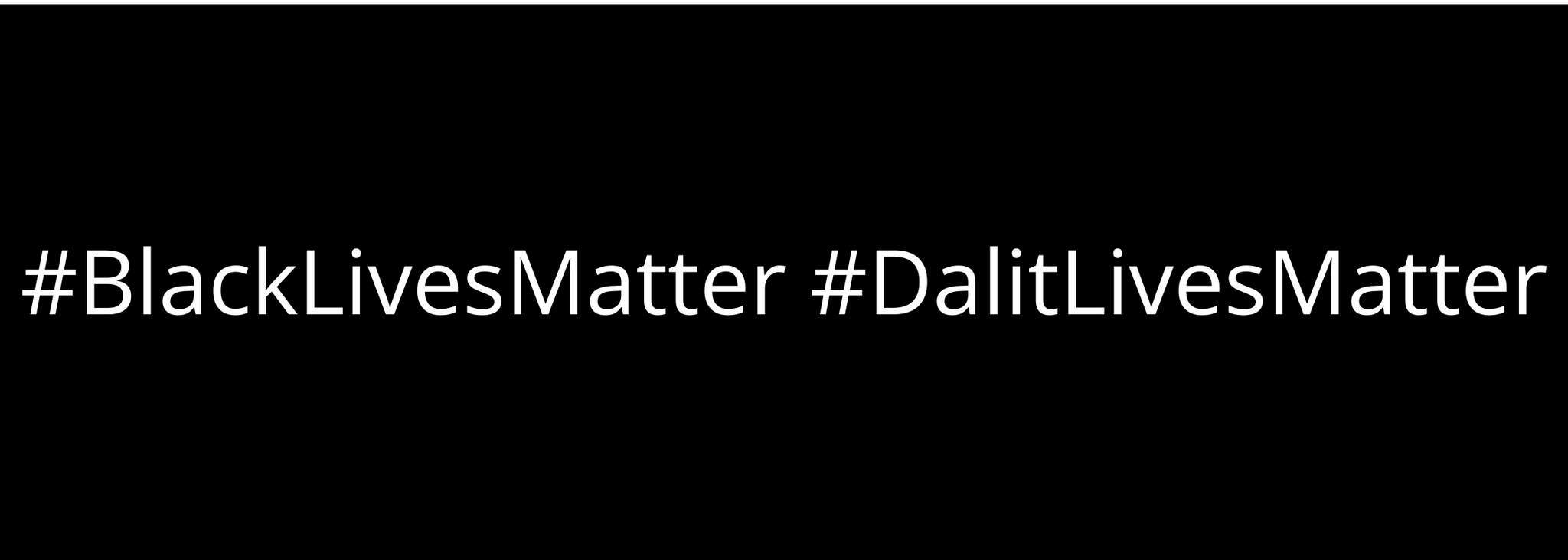This resource was created by PhD Candidate Aakriti Kapoor as part of their research.
About the Initiative
.png)
Instead of trying to solve the most complex issues facing education independently, solidarity helps notice the ways in which issues are interrelated. This project specifically looked at solidarity building in community with Black and Dalit/Caste-oppressed youth. Youth between the ages of 16-29 worked in collaboration with Teacher Candidates (future teachers) to think about how education can respond to the needs of both Black and Dalit/Caste-Oppressed students. Over the course of a year, youth discussed issues of anti-Black racism, Casteism, identity, and more. Their collective work led to the development of two educational projects they felt would be useful to advance Black-Dalit/Caste-oppressed solidarities in education which are available on this website.
Where things like racism and other social issues are normalized as “just the way things are”, in the words of Ruth Wilson Gilmore, Freedom is a Place – and like all other places on Earth, we can build that place into existence. Creating freedom starts in our minds, once we can imagine a world free of oppression, we can put it into existence. One important way in which we enact futures of freedom is through solidarity. Instead of trying to solve the most complex issues in the world individually, solidarity helps notice the ways in which issues are interrelated. This work questions what it means to be in solidarity with all forms of Life – be it People, Animals, Ecosystems, or Mother Earth at large because Solidarity is the ultimate Love Letter to humanity. In the face of Love oppression cannot exist.
Black-Dalit Solidarities
Per Hindu origin myths, people were created from different parts of God Brahma’s body and hierarchically ranked to an associated Caste group. At the top were Brahmins or Priests, followed by Kshatriyas or Warriors, then Vaishyas or Merchants, and Shudras or Peasants. Adivasis or Indigenous South Asians and Dalits were considered outside of the Caste system altogether. While Casteism emerges from Hindu origin myths, Casteism is also seen across Islam, Sikhism, Christianity, and other religions. This project primarily uses the terminology of either Dalit or Caste-oppressed. Similarly, there is significant cultural diversity connected with the term "Black" where many Black people can identify as ‘Afro-Caribbean’ or ‘African Canadian’ among other terms. This project recognizes the inherent tensions, contradictions, and impossibility that comes with using singular monolithic terms. Black-Dalit solidarities are long-standing. For example, the Black Panther Party inspired the Dalit Panther Party in the 60s and 70s; Dr. B. R. Ambedkar, a revolutionary often dubbed the Malcom X of the anti-caste movement, was inspired by the Black Harlem Renaissance in New York; more recently, both the Dalit and Black community supported each other in global #BlackLivesMatter and #DalitLivesMatter protests.

Origins of both race and Caste are also intricately connected. Anti-Black racism can be traced to the advent of the transatlantic slave trade where between 1444 and 1880s, approximately 15 million Africans were forced to leave the continent. The slave trade created enormous wealth for Europeans – and so to defend the accumulation of wealth through these means, it became necessary for European colonies to justify treatment of Black peoples in such a way. This gave birth to the idea of race which was an arbitrary and systematic organization of human population groups that ultimately placed white folks at the top, and in the words of Sylvia Wynter, Black people “at the bottom”.
The Caste System was created to similarly justify power and privilege. Jotirao Phule explains: More than 3000 years ago, the Aryan progenitors of the present Brahmin Race descended upon the plains of Hindoo Koosh, and other adjoining tracts...they were an off-shoot of the Great Indo-European race…[And they] came to India…as conquerors…They originally settled on the banks of the [Ganga] whence they gradually spread over the whole of India. In order, however, to keep a better hold on the people they devised…the ordination of Caste, and the code of cruel and inhuman laws, to which we can find no parallel among other nations…The institution of Caste…had no existence among them originally.” Similar to how white supremacy created the concept of race to justify the transatlantic slave trade and colonization in many parts of the world, Brahminical supremacy created the concept of Caste to justify colonization of the original Dravidian peoples living in modern day India.
Education Projects
Project 1: Educating with the Arts
Youth expressed the importance of educational resources that centre connection through the arts (e.g., documentaries, short stories, social media reels, posters, etc.). In the time frame of this initiative, it was difficult to fully develop such arts based resources. To this end, teacher candidates developed this ask into an "assignment" where youth / community members can sign up to co-develop different media relevant to Black-Dalit solidarities. If you are an educator or community organizer, we invite you to use this document as a starting point to develop these arts-based resources. Or, if you would like to create a media piece in relation to one of these topics and have it be featured on this website, feel free to submit it to us via the form below (only available on desktop version of website).
Project 2: Repository of Resources
Youth outlined a need to create a repository of resources that support learning about Black-Dalit/Caste-Oppressed histories, identities, and solidarities. This is a starting point in an attempt to develop a community curated list of resources. Feel free to review this list and suggest more additions by filling out the form below.